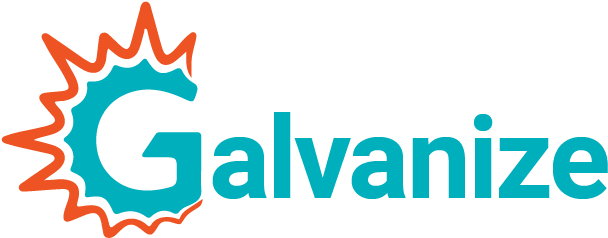
Education Loans for Study Abroad
Educational Loans Overview
“An investment in knowledge pays the best interest” – Benjamin Franklin.
As the above quote goes, money spent on one’s education does reap valuable benefits in the long run; hence students are on the lookout for every possible opportunity to realize that dream. When it comes to the financial aspects, students primarily finance their education via the following means:
- Self-Finance: Funds from personal tangible assets, liquid funds, and savings.
- Scholarships/ Fellowships/ Grants: Funds from the respective university or from the destination country.
- Education Loans: Funds from reputed banks to support your educational expenses abroad.
Education loans are an increasingly sought-after solution that provides flexible options for financing foreign education. Credible education loan providers step in with their good guidance and assured support, helping aspirants finance their study abroad dreams.
India sends out lakhs of students abroad for education every year. Ensuing the pandemic, the numbers are on the lower side at around 3.75 Lakhs per year as per UNESCO data. Nevertheless, the prospects of Indian students flying abroad for education are steadily increasing every year. The US accounts for the lion’s share of the pie, with more than 50% of students preferring to study there. This is followed by Australia, Canada, UK, and Germany.
Tuition fees, living expenses, travel costs, etc., along with the currency rate of the concerned nation will have a definitive bearing on the total cost of studying overseas. On the positive side, there are numerous benefits to taking out an education loan like enhancing your credit history, income tax benefits, not having to spend out family money/ savings, etc. Many education loans cover not just the cost of tuition fees but also include travel costs, and living expenses, as well.
Indian banks including NBFCs (Non-Banking Financial Companies) provide education loans to deserving candidates depending on the foreign university to which the student is admitted, the course of study, study destination, etc. While government banks are known to provide higher loan amounts by taking guarantees in the form of collateral, many NBFCs are likely to grant unsecured loans, with comparatively lesser loan amounts. Loans can be reimbursed in multiple ways, i.e. most loan providers give flexible repayment options.
Education Loan Features & Requirements
Age:
The common age bracket for education loans is between 18 to 35 years. Although some loan providers do accept senior candidates with advanced age. Such cases are approved on a case-by-case basis depending on the financial background of the individual, the program of study, the study destination, the university of study, etc.
Program Type:
The type of educational program one can apply to includes undergraduate/bachelor’s education, master’s programs/graduate study, doctoral studies/ Ph.D. All academic domains such as Science, Humanities, Engineering, Management, etc., are eligible for education loan options. However, you have to verify with your loan provider the program, and subject domain eligibility.
Expenses Covered:
Tuition fees, exam fees, traveling expenses, living costs, labs and library fees, pre-admission costs, etc., are some of the costs that most loan providers cover. Be sure to confirm with your loan servicer the exact costs covered. The expenses covered will vary depending on the type of education loan.
Proof of Admissions:
While applying for a loan many loan providers do not insist on acceptance to said program. This means you might be able to get an ‘Approval Letter’ for an education loan. But by the time you reach the stage of ‘Loan Finalization’, you will definitely need to provide a valid admissions letter/ offer of acceptance.
Co-Borrower/ Co-Signatory/ Co-Applicant:
Most education loans ask for a Co-Signer or a Co-Borrower in the loan. This is one way of securing the repayment of the loan. The co-borrower must be an earning member in India. It can be your parents, spouse, siblings, legal guardian, other family members, etc. The co-applicant would also be considered the primary debtor.
Secured Loan/ Loan with Collateral:
In simple terms, secured loans are less risky for banks. Candidates who can qualify for secured loans have higher chances of reaching loan finalization. Moreover, secured education loans generally sanction larger amounts and offer more flexibility to the borrower.
In a secured loan, the borrower i.e. the applicant/primary debtor will need to provide proof of collateral funds such as immovable assets – agricultural & non-agricultural lands/ flats/ houses, deposits – fixed deposits, recurring deposits, or gold deposits. Securities such as equity shares, debentures, and bonds, can also be used as collateral.
Unsecured Loan:
A non-secured loan is one in which the borrower does not provide any tangible or intangible assets as a guarantee against the loan amount. Unsecured loans are a risk for the bank since they will have to bear the consequences of the unforeseen circumstances that come with loan forfeiture.
For borrowers, even though this kind of loan might seem advantageous, they will not have many features, flexibility, or enough coverage like the secured ones. Nevertheless, few public banks, many private banks, and NBFCs do offer unsecured education loans.
Education Loan Pathway
At Galvanize, we have a simple yet comprehensive profile form that you need to fill in. Input all the necessary data and you are set. We will do all the hard work for you in terms of research, analysis, comparison of available loans, and possible vendors suitable to your profile.
We shall revert back to you with all the options and you can make an informed decision and finalize your choice.
Essential Documents
Like any regulated process that requires approval and passes through multiple verification channels, the education loan attainment procedure is document intensive as well.
Galvanize will hold your hand through these steps and ensure you have your papers well before time. Below we have provided an exhaustive list of documents, ID proofs, transcripts, etc, that one may need while applying for an education loan.
Application FormThis is the first step in your education loan process. The form must be filled accurately and a copy must be held with the candidate. This form will ask for the basic details that a borrower will need to declare with the bank, such as name, age, address, educational qualification, a professional designation held, income tax information, educational program details (for which loan is required), parents name/ spouse name, contact details (email, cell), co-applicant information, collateral information, etc. |
Passport Size PhotographsCandidates and Co-applicants will need to provide passport-size photographs for multiple documents, including the applicant form, loan finalization form, etc. Generally, 2 photographs would do. |
Photo IDsPhotographic IDs are essential in the documentation process. The following would be qualified by most loan providers: Aadhaar, Voter ID, PAN card, Passport, Driving License, etc. |
Age ProofA document verifying the candidate’s age will also be required such as a Birth certificate, Passport, Aadhaar, PAN card, Driving License, etc. |
Address ProofThe following documents are accepted as proof of address: Aadhaar, Passport, latest Electricity Bill, latest Telephone Bill, Ration Card, existing House Lease Agreement, Bank Account Statement, etc. |
Academic DocumentsApplicants must provide a list of mark sheets to certify the candidate’s educational history. This implies mark sheets of 10th and 12th grades, undergraduate program, and masters program (if any). Some banks also ask for national-level entrance exam scorecards. |
Admission LetterIf the student has already received an offer in the concerned program, then an admissions letter must be provided. Usually at the beginning of the loan application procedure, an offer letter might not be mandatory, but the same must be provided during loan finalization. |
Bank StatementsBank statements or passbooks of the last 6 to 8 months will be required. |
Income Proof – Asset Details – Yourself and Co-BorrowerIncome proof can be shown via Salary slip, Form 16, Income-Tax returns of the last 2 years, and computation of income of the last 2 years certified by a Chartered Accountant. This needs to be provided for the loan approval. |
Program Cost DetailsThe details of the educational program you wish to pursue must be given. This includes the program name, university, program cost, duration, application status, visa information, etc. These details can be provided before loan finalization. |
Scholarship ReceivedIf the student has received a scholarship, the details regarding the scholarship amount, costs covered, official scholarship award document, etc., will be requested by the loan provider. |
Key Factors in Loan Approval
There are certain aspects that loan providers focus on and when such key factors are strong, loan seekers are most likely going to get their loans approved. We, at Galvanize, ensure our students understand the same
Age
Though this requirement varies per lender, the age of the candidate does play an important role in loan finalization. A very young candidate cannot avail of education loans for study abroad (some banks have a minimum age limit of 16 while many start with 18 as the minimum age bar).
Collateral Loan & Guarantor/Co-Applicant Status
This is the golden rule in most loan applications, this clause takes on even more significance if you are looking for higher loan amounts. Loan seekers who can provide adequate collateral or have a promising guarantor/co-applicant to sign on to be a co-borrower, then chances of loan approval skyrocket. The loan provider will analyze the job, income, and financial health of the guarantor or verify documents supporting the collateral.
Credit History
The credit history of the applicant and the co-applicant is always an important condition for availing any kind of loan. The CIBIL Score (Credit Information Bureau of India Limited) is used as a good indicator of the loan repaying capacity of the candidate. Previous loan repayments done by the candidate or the co-applicant is analyzed to arrive at an appropriate credit score.
Academic & Professional Record
Loan providers will look into the past academic performance of the candidate, and if he/she has work experience, that will also be verified. Basically, an academically strong student should be able to complete his education abroad successfully and find suitable remuneration. All this is held as evidence for possible repayment of the loan in the future.
University & Program
The educational institution that you are to attend, its reputation, and its ranking, will have a bearing on the loan process. Students must make sure their university is recognized and accredited, this is essential if the loan is to be approved. The letter of acceptance for the particular program must also be supplied as proof.
Future Job Prospects of the Candidate
If your concerned program has good earning potential most banks will agree to lend you money. Earning prospects of the candidates will depend on a multitude of factors such as country, currency, job market, candidate’s past work experience, academic standing, etc.
Secured Loans or Loans with Collateral - A Closer Look
In simple terms, collateral or security is a cushion for the lender to fall back on. The guarantee is that collateral can be used to cover loan repayment if in case the loan borrower is unable to repay the loan. The collateral security will be mortgaged to the lender until loan tenure is complete and repayment is done. Common types of assets that are accepted as security is given below:
| Collateral Type | Particulars |
| Guarantor | This is the loan with a Co-Applicant/Co-Borrower. Their guarantee on the loan is a security for the bank. They become the primary debtors as well. |
| Land | Agricultural Land, Commercial Plot, Bungalow, Independent House, Flat. These are the main types of tangible assets that will be considered as collateral for the loan.
Note: Some banks do not accept agricultural land as collateral. |
| Deposits | Fixed deposits, Gold deposits, Recurring deposits.
Note: Some banks might not accept recurring deposits. |
| Securities | Bonds, Equity Shares, Debentures. |
| Insurance Policy | Primary debtors can show existing insurance policies as collateral.
Note: Insurance policy must allow for such an assignment. Also, many banks do not accept insurance policies as collateral. |
| Third-Party Borrowers | Another bank or employer can be used as a collateral if they are willing to provide a guarantee. |
Tax Benefit on Educational Loans - Section 80E
Even though taking an education loan is seen as a liability in a general sense, did you know you can avail of tax benefits from it?
As per section 80E of the Income Tax Act, the interest paid on education loans can be deducted from the total income while calculating tax. In order to show documentation evidence while claiming the 80E tax benefit, it is best to ask for an education loan certificate from the bank/lender that describes the interest and principal portion of EMIs paid in a particular year.
Here are some general points you must be aware of to avail of this benefit:
- The education loan must be taken from an approved financial institution, banks, and notified NBFCs.
- This rebate is available for 8 years or till the year interest is paid, whichever is earlier. Please note the deduction is only applicable to the interest part of the EMI and not the principal portion. That is there is no tax benefit for the principal part of the EMI.
- The benefits as per section 80E can be deducted from the income of an individual only. This rebate cannot be applied to the taxes of a HUF, Private Company, or any other kind of individual.
- The education loan can be taken for higher education purposes for oneself, spouse, children, or for the student for whom the individual is the legal guardian.
- Parents can avail of the benefits of the 80E deduction from their children’s education loan.
- The total interest paid can be used as a deduction while calculating income tax. There is no maximum limit on the maximum amount of interest that can be shown as a deduction.
Interest Rates on Educational Loans
Indian education loan interest rates range anywhere between 9% to 16%. Please remember this rate can vary between various loan providers and will also depend on your creditworthiness. If you are able to provide a collateral, loan interest rates can be reduced significantly. On the contrary, unsecured loans have interest rates at least 1.5%-4% higher than loans with a collateral.
The below table provides an overview of the interest rates of various financial institutions. Please keep in mind the rates will change at the discretion of the bank. Make sure to confirm the base interest rates with the bank as they change annually or at the discretion of the lender.
| Institution Type | Interest Rate | Loans provided |
| Government Banks | 7-10% |
|
| Private Banks | Collateral Loan – 8.5-10%
Non-Collateral – starts from 10.5% |
|
| NBFCs (Non-Banking Financial Companies) | Collateral Loan – 9.5-10.5%
Non-Collateral starts from 10.5% |
|
| FinTech Companies (Financial Technology) | Interest Rate: 8.5-10% |
Disclaimer: These companies have a list of universities they help. The university we are looking for a loan should be in that list. |
Educational Loan Reimbursement
- Education loans have a repayment period of anywhere between 5 to 15 years. The average range would be 5 – 7 years. Most lenders have flexible repayment options so the borrower can plan the repayment schedule at his/her convenience.
- Loan providers offer a moratorium period to education loan borrowers. During this period, the borrower generally does not start any repayment towards the loan. This period may be for a duration of 6 months to 1 year. (Please cross-check with your lender and confirm the exact duration of the moratorium period, if any.) Generally, this relaxation period is during the time when the applicant has completed the program and is applying for suitable jobs. RBI has advised banks to give a moratorium of 1 year for education loans. Axis Bank, Prodigy Finance, ICICI Bank, HDFC Credila, Avanse, Auxilo, and InCred, all provide moratorium periods of some duration. (Please check with the respective loan providers on the exact conditions of the moratorium period.)
EMI – Estimated Monthly Installment of your loan will contain both the principal and interest portion. During the beginning of your repayment period, the EMI will contain more interest, and towards the end of the loan tenure, your EMI will contain more principal. Once your moratorium period is over, you will need to start paying the EMIs regularly. You have to keep paying the EMIs until the entire loan amount is repaid. If you opt for lengthier loan tenure, the EMI amount will be smaller whereas opting for shorter loan tenures will leave you with larger EMI options.
Other Useful Links:
- Scholarships for Indian Students
- A Guide to Study abroad VISAs
- Check out our blog page for more content










